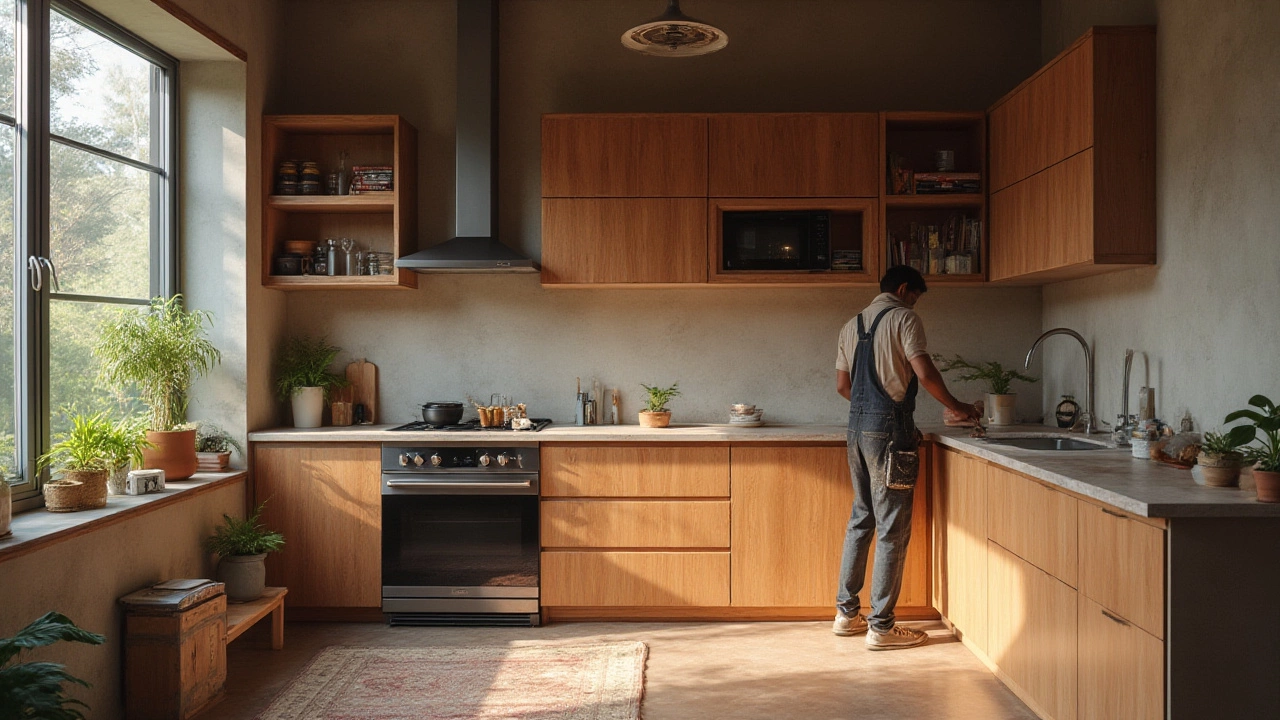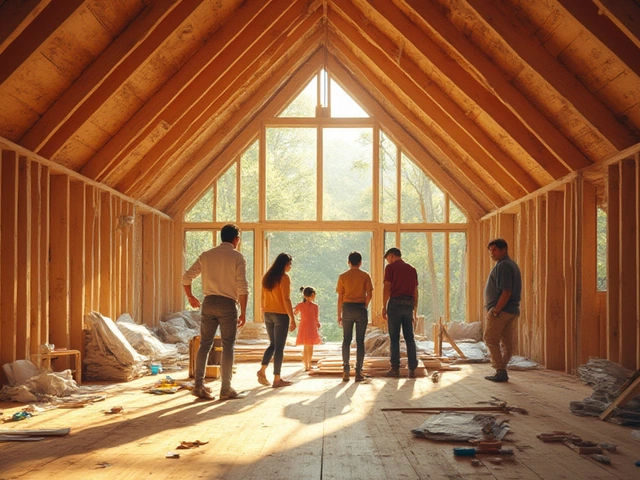Here's a simple truth about home renovations: not every dollar you spend will add a dollar to your property value. While some people dream up wild projects—swimming pools, fancy wine cellars, or curved glass staircases—most buyers just want comfort, practicality, and a home that looks and feels taken care of. But where should you actually invest when renovating? The answer might surprise you. Forget the flash—think function, finish, and fixing the small stuff. Take Auckland's wild property market as proof: tidy, modernised homes outsell their unrenovated neighbours, even with the same postcode and floor plan.
Kitchen and Bathroom: The Power Couple of Value
Ask any seasoned real estate agent in New Zealand and they’ll tell you: the kitchen and bathroom make or break a sale. Prospective buyers don’t just peek in these rooms—they scrutinise. Cabinets that slam, leaky taps, and stained grout can easily put them off. Why? Because these are the two most expensive areas to rip out and redo. Data from the 2024 New Zealand Property Report shows renovated kitchens and bathrooms often return 60–80% of your spend in increased value, a higher return than most other projects.
Let’s break it down. A full kitchen reno means more than swapping benchtops. Think about layout first: is it open, practical, and welcoming, or do you bump your hip every time you open the fridge? Swapping old appliances for energy-efficient models? Big tick. Adding more storage, better lighting, or a spot for the coffee machine—small changes, big impact. Extra points for soft-close drawers and clever organisers.
The bathroom is the ultimate test of detail. Heated towel rails? Must-have in a Kiwi winter. Frameless glass showers trump tired shower curtains every time. A floating vanity gives a sense of space and makes cleaning floors less of a chore. If your budget’s tight, focus on surface-level fixes: re-grout, upgrade tapware, replace the mirror. Fresh silicon and sparkling tiles are psychologically powerful.
Keep your design choices broad. The “hottest” tile pattern or tap style today might scream “2025” by the time you sell. Neutral palettes—greys, whites, soft taupes—let people imagine their own furniture and art, rather than being distracted by your taste. And don’t forget extraction fans. A steamy bathroom without ventilation leads to costly future repairs and is a major buyer turnoff.
The Impact of First Impressions: Street Appeal and Entryways
Love at first sight is real in property. Most buyers swing by a house before booking a proper viewing, and if the place looks scruffy, overgrown, or plain odd, they just move on. Fresh paint, tidy landscaping, a solid front door, and nice lighting do wonders. This doesn’t mean you need a magazine-perfect garden; mowing, edging, chucking out dead plants, and adding a few colourful pots does the trick for most Auckland properties. A new letterbox, clean gutters, and fixing broken pathways make the message clear: this house is loved and looked after.
The entryway sets the tone. In Kiwi homes where we often kick off shoes inside, a clean mat, a spot for shoes and coats, and some subtle lighting are smart, practical inclusions. If the first few metres into a home feel cramped or chaotic, buyers sense clutter and stress. Want to boost the wow factor? Replace dated tiles or carpet, repaint walls in a fresh but neutral colour, and pop a simple artwork on the wall. Functional touches like extra power points or USB chargers near the front door tell buyers you’ve thought about modern living.
Worried about cost? Auckland’s council sometimes offers grants for streetfront improvements or community planting days, which can stretch your budget if you’re savvy. And here’s an easy win: get rid of old satellite dishes, rusty garden sculptures, or abandoned wheelie bins. Little things like sweeping the driveway and oiling the door hinges cut no corners in the eyes of buyers or valuers.

Smart Storage, Space-Boosting Tricks, and Flexible Layouts
Space is a premium, especially in cities like Auckland where old villas often have awkward corners and odd-shaped rooms. Nothing scares a buyer off faster than clutter or a sense of missing storage. Built-in wardrobes (not just poky free-standing ones) are a game-changer. Modular shelving, under-bed drawers, or pull-out pantries transform how usable a small space feels. One 2024 local buyers’ survey found walk-in wardrobes topped buyers’ wishlists—just behind an updated kitchen or extra bathroom.
Open-plan living is still hot, but the way we use it is changing. Since the pandemic, there’s been another thing people have eyes for: a home office nook. It doesn’t need to be a separate room with doors—just a spot in a quiet corner with good natural light, power, and a semi-private feel. If you can cannibalise that awkward under-stairs alcove or a wide hallway, do it. Foldaway desktops and built-in shelving are small-space gold.
Decluttering is a value-add that costs next to nothing. Storage isn’t just what’s built in; it’s also how you show the space can be used. Remove overstuffed furniture and personal collections when you’re planning to sell. It helps buyers see themselves living there—and it’ll make the space look bigger, airier, and more inviting.
Energy Efficiency and Longevity: Invisible Upgrades That Pack a Punch
Upgrading your home’s bones isn’t as Instagram-friendly as new tiles or splashbacks, but it pays off for comfort and bills. Double glazing, insulation, and heat pumps are now expected in Auckland—buyers ask, and they notice when homes fall short. If your property is chilly or damp, sort it out: install insulation in the roof and underfloor, add good curtains, and consider a heat pump. These aren’t just practical fixes; they literally change how people feel in your home.
Smart lighting, modern wiring, and secure locks sit high on the checklist too. With rising power costs, LED lighting makes a noticeable difference to electricity bills. Upgrading an ancient fuse box or adding more outlets stops people imagining costly electrical work down the track. If you’re renovating an older property, check for borer or hidden water leaks—nothing drags a sale down faster than a nasty builder’s report.
Even something as simple as a new coat of paint—inside and out—can breathe life into a tired house. Pick quality paints for longevity, and don’t skimp on prep work. Repainting guttering, window frames, and the front door modernises an older façade without blowing your budget.
Think long-term. Spruce up the garden with easy-care natives, mulch beds to keep weeds down, and skip anything that will need weekly pruning. Buyers look for low-maintenance, durable features. Smart upgrades (solar panels, security cameras, home automation) are more common in new builds, but retrofitting them in older homes can stand out if the rest of the house is already in good condition.
Got a classic Kiwi weatherboard home? Invest in keeping that exterior tight. Weatherboards and roof repairs may not wow you or your friends now, but should you ever sell, a builder or valuer will be looking hard for leaks, rot, or signs of deferred maintenance. Fix the cracks, paint the soffits, and treat any spots of rot before they get bigger. It’s those behind-the-scenes fixes that often deliver the most value over time.



Write a comment